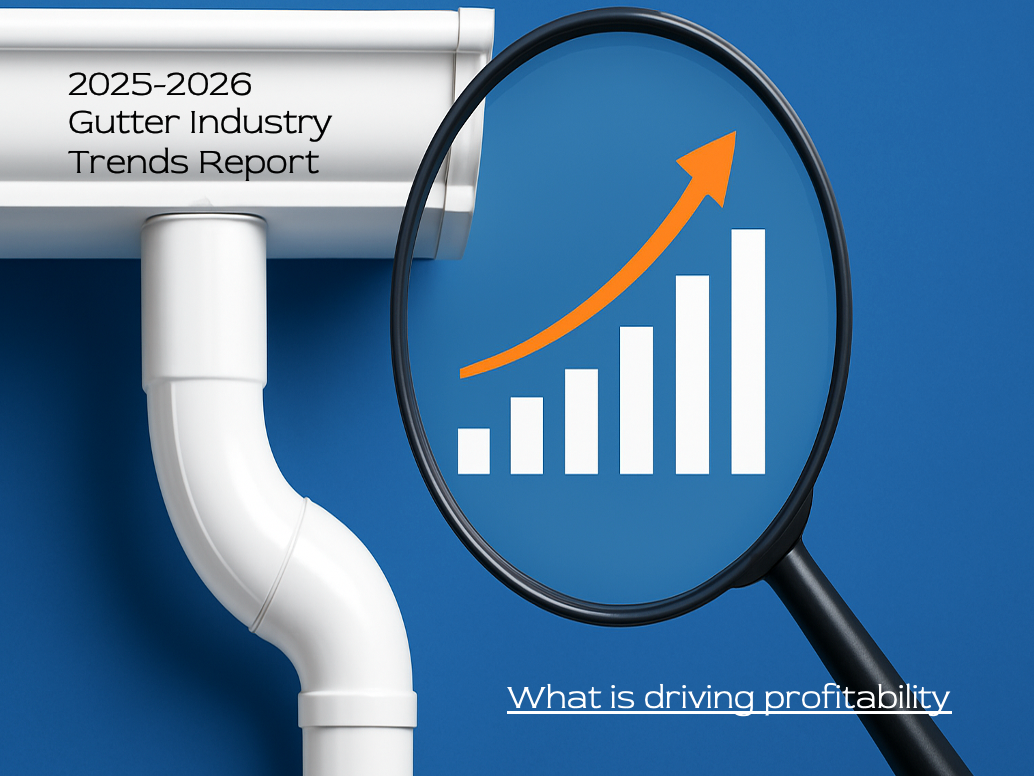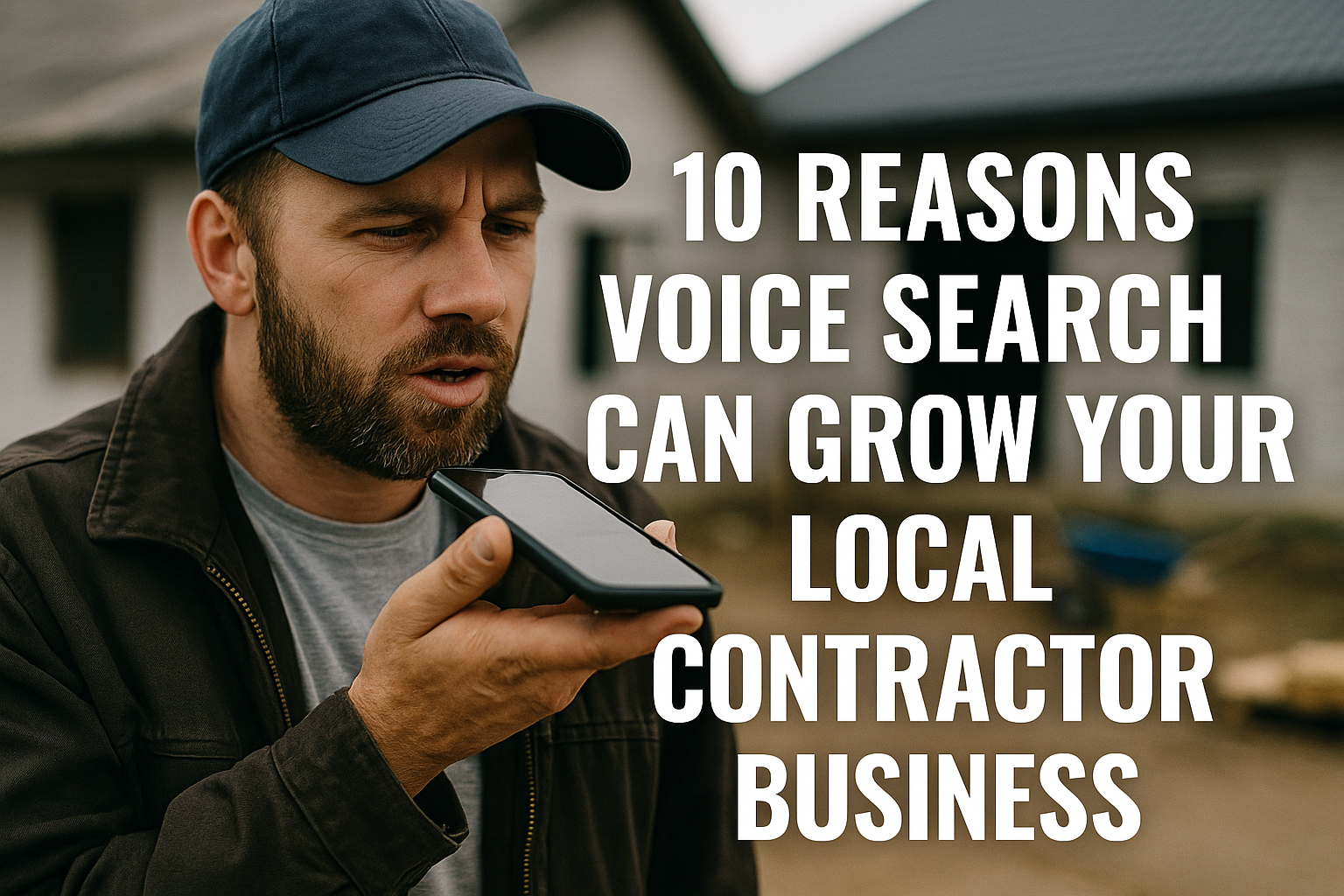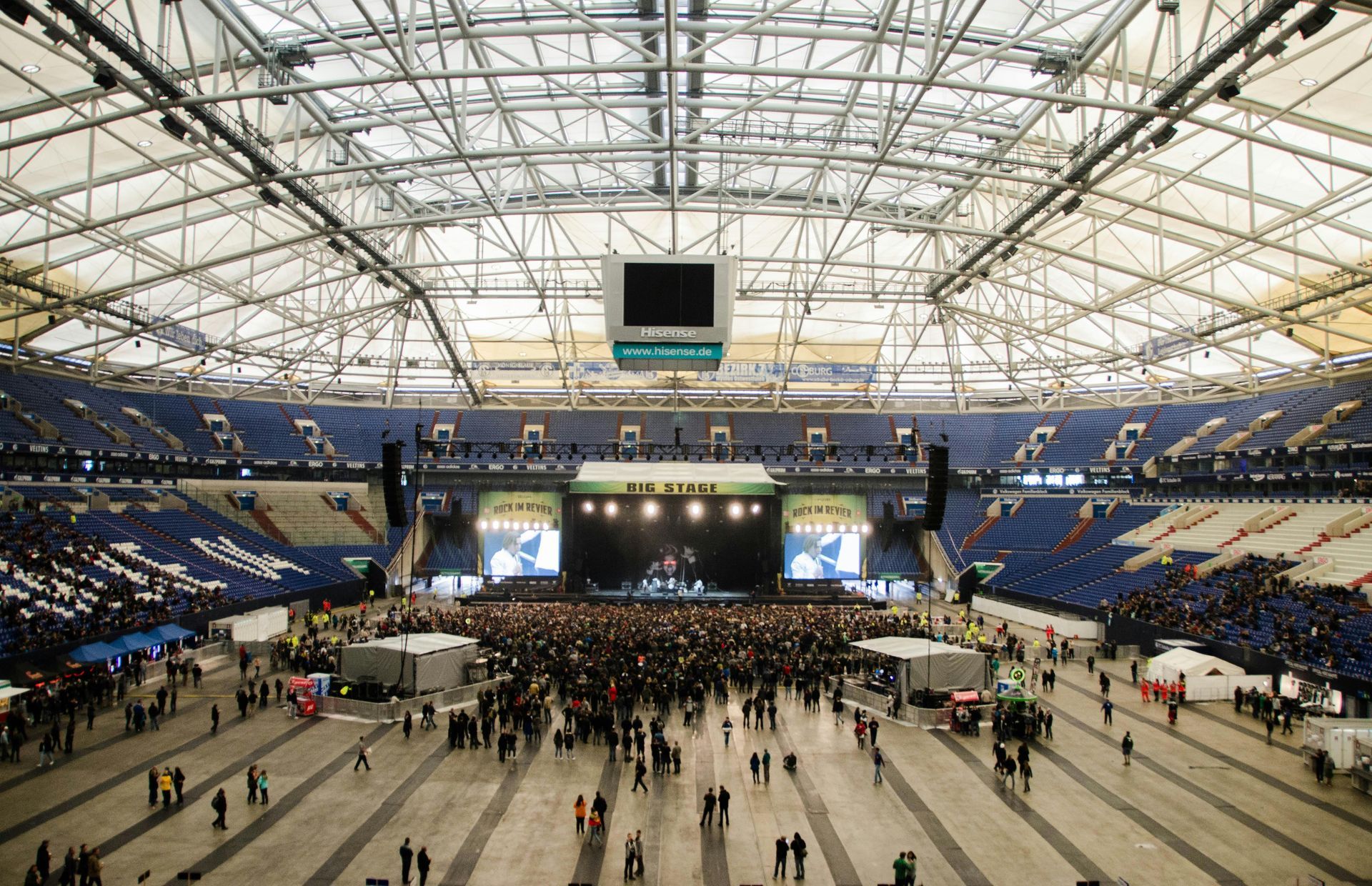What is the difference between SCO and SEO?
SCO Marketing (vs. SEO): Why Contractors Can’t Ignore It Anymore
Will Schmidt - May 1, 2024
SCO marketing optimizes your content across search channels (social, video, forums) so your brand shows up where people already hang out. SEO alone drives organic Google traffic—but in 2025, relying only on SEO leaves huge gaps. This article shows you how SCO works, why it complements SEO, and how contractors can use it to dominate local markets.
Sections and Topics
- What Is SCO Marketing?
- Why SCO Matters More Now (2025 Trends & Stats)
- SCO vs. SEO: Direct Comparison
- SCO Strategy for Contractors (Step by Step)
- Measuring SCO Success & Avoiding Pitfalls
- How to Combine SCO + SEO for Maximum Reach
What is SCO Marketing?

Core Definition and Ideas
SCO stands for Search Channel Optimization (sometimes also called Social Channel Optimization) — it’s the strategy of making your content visible and clickable across all discovery channels, not just Google search. SCO optimizes your posts, profiles, videos, and community content so each platform sends you traffic, leads, or awareness.
Put simply: SEO helps people find your website via search engines. SCO helps people find you through social media, video, forums, apps, and more.
- Many marketing blogs define SCO similarly:
“SCO marketing maximizes your visibility to increase website traffic across multiple channels.” accuranker.com - “SCO full form … is a strategy designed to make your content discoverable across multiple search platforms, not just Google.” AdLift
Typical Fractional CMO capabilities
- What Fractional CMOs Handle
- Develop brand strategy and marketing roadmap
- Manage ad budgets, analytics, and reporting
- Hire or coordinate with agencies
- Oversee messaging, content, and creative direction
- Build KPI dashboards and ROI tracking
These are valuable — but they often stop at advisory. For the trades, you need execution — websites, SEO, reviews, and leads that actually close.
Why SCO matters in 2026?

2025 Digital & Search Trends
Online visibility has entered a new era. Google is still the heavyweight champion of discovery—but it’s no longer the only ring that matters. In 2025, homeowners and business owners are using multiple “search surfaces” to find local contractors: social media, YouTube, map apps, review sites, and even voice search through smart devices.
Let’s look at the data:
- Organic search still drives 33% of total website traffic across industries (Conductor). That means SEO remains essential, but it only covers one-third of the potential pie.
- 91% of marketers say SEO positively impacted their business performance in 2024 (Conductor), showing it’s far from obsolete.
- The global SEO services market will reach nearly $147 billion in 2025 (AIOSEO) — proof that competition is fierce and budgets are rising.
- The top 3 Google results capture 68.7% of all clicks, while everyone below that line fights over scraps (AIOSEO).
- SEO ROI typically takes 6–12 months to turn positive, with the best returns appearing in year 2 or 3 (First Page Sage).
These stats tell a clear story:
✅
SEO still matters—you can’t ditch it.
⚠️
But SEO alone is slow, crowded, and platform-dependent.
Contractors who depend solely on Google rankings will always play catch-up. SCO (Search Channel Optimization) solves this by expanding visibility beyond Google, giving your brand multiple entry points into a customer’s decision journey.
Gutter Marketing - How to Get More Gutter Leads
SCO vs SEO

SEO focuses on optimizing your website pages, structure, and backlinks to rank in search engines like Google and Bing. SCO takes that same mindset but applies it across every platform where people search or discover content — from social media to video to maps. In short, SEO is about showing up when someone searches. SCO is about showing up everywhere people look for answers.
Goal Intent of SCO vs SEO
SEO’s main goal is to rank high in search results for your target keywords and attract organic website traffic. SCO’s goal is broader — it’s to appear across multiple discovery points like social feeds, video platforms, and online communities. While SEO builds visibility in search engines, SCO builds visibility through people’s daily habits and content consumption patterns.
Platform and Format
SEO mainly operates within your website environment — home pages, blogs, and backlinks. SCO extends your reach by adapting content for platforms such as YouTube, Facebook, Instagram, Google Business Profile, and review websites. The goal is to stay visible whether someone is reading, scrolling, or watching.
Strategy & Tactics
SEO relies on keyword research, technical optimization, page speed, and link building. SCO, on the other hand, is driven by creative adaptation — transforming your message into short clips, image carousels, captions, hashtags, and interactive posts. Both require consistency and measurement, but SCO demands more variety and experimentation.
Results Timeline & Tricks
SEO takes time — typically 6 to 12 months to see momentum, with results compounding over years. SCO delivers faster exposure by placing your content in front of active audiences on multiple channels. However, it requires frequent updates, fresh creative ideas, and awareness of algorithm shifts to stay effective long term.
Example for Contractors
If you install gutters, a homeowner might not immediately search “gutter installers near me.” Instead, they could see your before-and-after gutter video on Instagram or Facebook, save the post, and later visit your website. That’s SCO at work — meeting customers before they even start searching, while SEO waits for the query.
SCO strategies for contractors and local businessess
How You Actually Do SCO
SCO starts by building a system that consistently publishes optimized content across all relevant channels. Each platform has unique rules for timing, hashtags, and engagement signals. For contractors, the winning mix combines project photos, educational tips, testimonials, and local proof that builds trust before the estimate call.
Step 1 — Channel Audit & Prioritization
Identify which discovery channels your ideal customers use most. For local contractors, Facebook, Instagram, YouTube, Nextdoor, and Google Business Profile often deliver the highest ROI. Instead of trying to post everywhere, focus on two or three platforms and dominate them consistently.
Step 2 — Keyword & Intent Mapping per Channel
Each platform has its own search intent. YouTube users type “how to repair a gutter leak,” while Instagram users look for “gutter before after.” Use built-in tools like YouTube Autocomplete or Instagram Search to find real queries and create content that mirrors what people are already searching.
Step 3 — Content Format & Adaptation
Repurposing isn’t copying — it’s reshaping. Turn blog insights into short Reels, project galleries into carousels, and FAQs into quick 30-second clips. Align visuals, captions, and tone with each channel’s culture so your content feels native instead of repurposed.
Step 4 — Engagement & Signals
Algorithms reward participation. Ask questions, invite comments, and use polls or “Ask a Pro” posts to start conversations. Each like, save, and share is a visibility signal that helps your content rise above local competitors.
Step 5 — Link-Back & Traffic Routing
Always provide a clear path from your social posts to your website. Include links to relevant blogs, service pages, or contact forms to turn engagement into conversions. Even awareness-focused content should leave viewers a way to reach you.
Step 6 — Frequency & Consistency
Consistency matters more than quantity. Aim for three posts and one video per week per channel. Over time, steady posting trains the algorithm to recognize your brand and keeps your audience expecting new updates.
Biggest SCO Mistakes

Key Metrics to Track
Success with SCO isn’t just about followers — it’s about measurable engagement and lead flow. Track metrics like likes, comments, shares, reach, and views alongside website traffic and form fills. Use UTM tracking to see exactly how much traffic and how many leads your SCO content drives to your site.
Engagement & Reach Metrics
Measure impressions, reach, and audience growth to gauge visibility. Engagement rate — the percentage of people who interact with your posts — shows how well your content resonates. Over time, focus on improving engagement quality rather than chasing inflated follower counts.
Traffic & Click Metrics
Track how many clicks each platform sends to your website. Study bounce rate, session time, and how many pages visitors explore once they arrive. This tells you whether your content is attracting curious scrollers or serious prospects ready to call.
Lead & Conversion Metrics
Your goal is leads, not likes. Monitor how many form submissions, calls, or quote requests come from SCO-driven traffic. Even a handful of new customers per month can yield thousands in revenue for home service businesses.
ROI & Comparative Growth
Compare your SCO time and ad costs with the value of the jobs it generates. If SCO content brings in faster leads than SEO alone, increase that investment. Benchmark both channels quarterly to see which is improving your cost per lead over time.
Combine SCO and SEO and thrive in local service markets

Unified Strategy That Covers All Bases
SCO and SEO aren’t separate strategies — they’re two halves of the same engine. SEO builds your website authority, while SCO amplifies that authority across other discovery channels. When used together, they create a cycle of visibility, traffic, and brand trust that multiplies your marketing ROI.
Content Repurposing Across Channels
Start with cornerstone SEO blogs or service pages, then break them down into SCO-friendly pieces. Turn your best-performing keywords into short videos, carousels, or infographics. This ensures your strongest content works overtime across multiple platforms.
Signal Amplification
Social engagement doesn’t just help on social platforms — it can boost your SEO too. Likes, shares, and mentions create digital signals that increase brand authority. Google and Bing notice when your brand name gains momentum across different ecosystems.
SEO-Driven Topics + SCO Distribution
Use your SEO keyword research to guide SCO content ideas. Create how-to clips or project showcases based on popular search queries. This keeps your content aligned with real audience demand while expanding visibility beyond traditional search engines.
Consistency & Testing
Treat both SEO and SCO as ongoing experiments. Test post formats, headlines, and timing to find what converts best. Use your analytics to refine messaging and maximize performance across both your website and social platforms.
Contractor example of successful SEO + SCO
Suppose you publish an SEO blog titled “How to Choose the Right Gutter System in Dallas.” You can turn that same content into three Instagram tips, two short Reels, and a Facebook post comparing materials. Some people will read your blog first, others will find you through social — but both paths lead back to your business.
Final Thoughts on SCO importance to local businesses
SCO isn’t just another marketing buzzword — it’s how contractors stay visible, trusted, and busy in 2025. When you combine SCO with strong SEO, your business doesn’t just show up on Google; it shows up everywhere your customers are scrolling, watching, or searching.
If you’re tired of posting without results, guessing what works, or waiting months for SEO to kick in, let’s change that. Book a free consultation with Talents Into Profits, and we’ll build the full system for you — from content strategy and social optimization to Google visibility and lead generation. You focus on your craft, and we’ll make sure your customers can’t miss you.
About the author
Will Schmidt
Will Schmidt, Founder and Owner of Talents Into Profits (TIP), has helped over 150 businesses across 17 different industries, including home services, healthcare, and SaaS, generating more than $11 billion in lifetime sales. His experience in providing branding, marketing, websites, and lead generation based on operational capacities has enabled his clients to continually see 20-50x monthly ROI for services rendered.
Subscribe to Blog
Sign up to get industry insights, trends, and more in your inbox.
Contact Us
We will get back to you as soon as possible.
Please try again later.
Book Free Consult
Join me for a 30-45 minute call to review how to grow your contractor business faster, more affordably, and easier.
SHARE THIS











